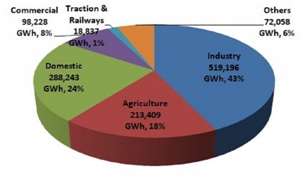

Context
New Delhi-based non-profit Centre for Science and Environment (CSE)reports has made findings that only feeble reduction of CO2 emissions in the thermal sector under Perform Achieve and Trade (PAT) scheme during the last ten years (since 2012).
Background
- Thermal power plants (TPP) under this scheme in the last decade had reduced just 1-2 per cent of overall carbon dioxide emissions emitted by them.
- The industrial sector accounts for 43 percent of the overall consumption of energy in India- making it the major contributor to the country’s energy and environmental footprint.
- Non-transparency, loose targets and overlooking of deadlines have resulted in the inefficiency of the PAT scheme.

Analysis
- Centre for Science and Environment (CSE) analyzed the efficacy of the PAT scheme for the thermal power plants.
- The analysis clearly shows that in both Cycles 1 and 2, TPPs (Thermal Power Plants) had the most lenient target and underperformed in meeting the target among other sectors.
Comparison of CO2 emission and emission reduction from electricity generation
- The total emission reduction from TPPs is 24.85 million tonnes of oil equivalent, which is only 3 percent of the total emission from the sector. This highlights the fact that the target given to TPPs is very less compared to the overall emission reduction from the sector.
- Electricity generation contributes to 40 per cent of this total emission, which is 825.6 million tonnes of CO2 in one year. The overall CO2 emission reduction achieved by thermal power plants in PAT cycles 1 and 2 is 13 and 11.9 million tonnes respectively.
Steps taken so far:
- The National Action Plan on Climate Change (NAPCC) was released in 2008 to check the increasing energy consumption of industries and related carbon emissions.
- One of them was the eight under the NAPCC was National Mission for Enhanced Energy Efficiency (NMEEE).
- Union Ministry of Power and Bureau of Energy Efficiency (BEE) were tasked with the preparation and the implementation plan for the
|
About BEE:
|
- ‘Perform, Achieve and Trade’ (PAT) is a competitive mechanism under NMEEE for reducing energy use in large industries.
Perform Achieve and Trade (PAT) scheme:
- It is a regulatory instrument to reduce specific energy consumption in energy-intensive industries, with an associated market-based mechanism to enhance the cost-effectiveness through certification of excess energy saving which can be traded.
- The energy savings achieved by notified industries is converted into tradable instruments called Energy Saving Certificates (ESCerts).The ESCerts after issuance by the Bureau of Energy Efficiency are traded at Power Exchanges.
- The government shortlists industries and restricts the amount of energy they can consume and defines a time limit of three years in the PAT scheme.
- These three years of time are called one PAT cycle. The industries are chosen after in-depth, sector-wise analysis by the government.
- Industries that participate in this scheme are called designated consumers (DC). Those that overachieve their targets are issued energy savings certificates (ESCerts) that can be traded with industries that have not achieved their targets.
- Non-achievers have to buy the ESCerts after the three years for compliance. Announcements for Six cycles since 2012 have been made so far.

Sectors, DCs involved and status of PAT cycles
Sectors covered by the scheme:
- PAT scheme covered about 13 energy-intensive sectors.
- The sectors included are thermal power plants (TPP), cement, aluminium, iron and steel, pulp and paper, fertiliser, Chlor-alkali, petroleum refineries, petrochemicals, distribution companies, railways, textile and commercial buildings (hotels and airports).
Way Forward:
It is projected that total energy savings of about 26 MTOE translating into avoiding of about 70 million tonnes of CO2will be achieved by March 2023. This seems optimistic but the energy reduction target should be made stringent in order to meet up with the global climate commitments with respect to greenhouse gas emission mitigation. Targets must be interlinked to material CO2 reduction.
Millions of tonnes of oil equivalent (MTOE) is a unit of energy used to describe the energy content of all fuels, typically on a very large scale.
Reasons sighted in the report such as non-transparency, loose targets and overlooking deadlines need to be resolved first in order to gain desirable results from the scheme.



